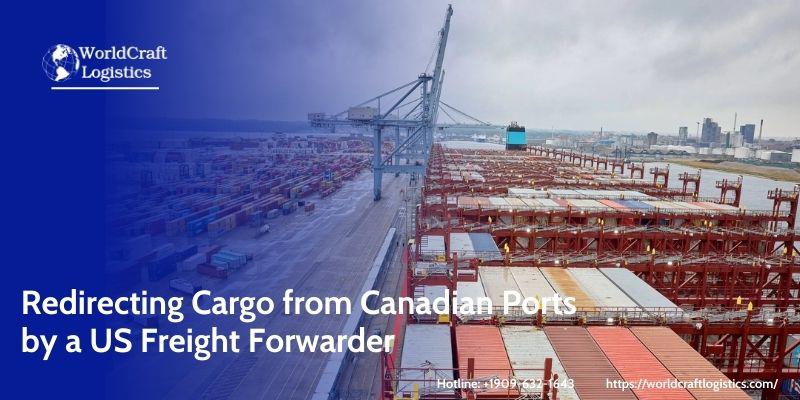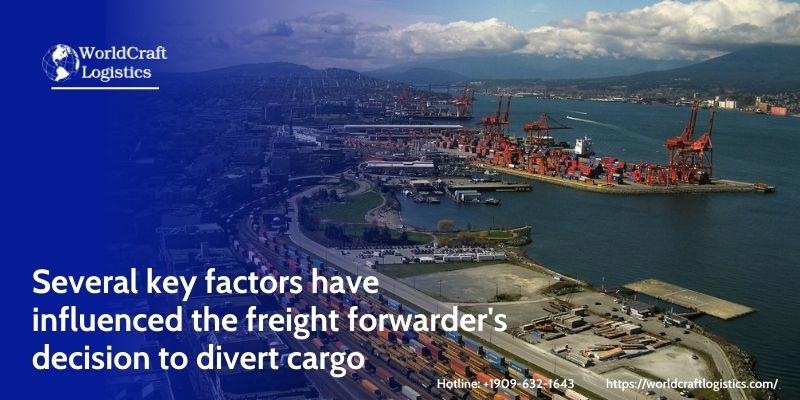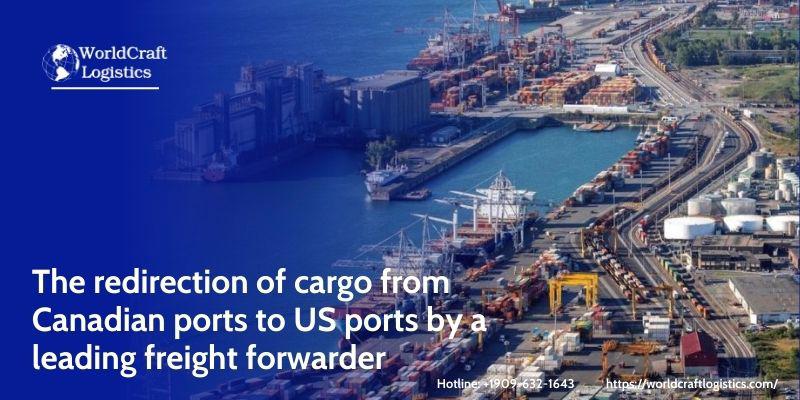
Starting June 1st, 2023 Our warehouse fee will be $0.65/cubic foot per month
In effort to lower the warehouse storage fee during inflation, we have went narrow aisle racking.This construction took us four months but the project is finally completed. With narrow aisle racking, we are able to drop storage by 24%.We as partners will go through this inflation together.
08/28/2024
In a recent strategic move that underscores the shifting dynamics in global logistics, a prominent US freight forwarder has initiated the redirection of cargo away from Canadian ports. This development has sparked significant discussions within the logistics and transportation sectors, highlighting the growing complexities and competitive pressures faced by shipping operators.

The decision to reroute cargo from Canadian ports stems from a combination of logistical challenges and evolving market conditions. According to the latest updates from Maritime Professional, the freight forwarder, identified as a major player in the industry, has opted to redirect its shipments to alternative ports in the United States. This move reflects a broader trend of companies reassessing their supply chain strategies in response to various pressures, including increased congestion, higher operational costs, and regulatory hurdles.

Several key factors have influenced the freight forwarder's decision to divert cargo:
Port Congestion: Canadian ports, particularly those on the West Coast, have been experiencing significant congestion. This has led to delays and increased costs for shipping companies. The decision to redirect cargo aims to mitigate these issues by utilizing less congested US ports.
Cost Considerations: The rising costs associated with port operations in Canada have prompted companies to seek more cost-effective alternatives. By rerouting cargo to US ports, the freight forwarder aims to capitalize on potentially lower operational expenses.
Regulatory Challenges: Navigating the regulatory landscape in Canada can be complex, with stringent rules and requirements for international shipping. The move to US ports simplifies compliance and reduces bureaucratic hurdles.
Strategic Partnerships: The US ports offer strategic advantages, including established partnerships and infrastructure that can enhance the efficiency of the supply chain. The freight forwarder’s decision aligns with a broader strategy of optimizing logistics networks.
The redirection of cargo has several implications for the logistics and transportation industry:
Competitive Pressure: Canadian ports may face increased competitive pressure as shipping companies reassess their port choices. This could prompt port authorities to enhance their services and infrastructure to attract and retain clients.
Operational Shifts: The shift in cargo flow may lead to operational changes within both US and Canadian ports. Ports in the US might see increased activity, while Canadian ports may need to adapt to changing cargo volumes.
Market Dynamics: The move highlights the fluid nature of global logistics and the need for companies to remain agile in responding to market conditions. It underscores the importance of strategic decision-making in maintaining a competitive edge.
Customer Impact: For customers and businesses relying on these logistics services, the redirection may affect delivery times and costs. It emphasizes the need for effective communication between freight forwarders and their clients to manage expectations and ensure smooth transitions.

As the logistics industry continues to evolve, the decision by this US freight forwarder serves as a noteworthy case study in adapting to changing circumstances. The move reflects a broader trend of optimization and strategic realignment in the face of operational challenges. Monitoring the outcomes of this redirection will provide valuable insights into the effectiveness of such strategies and their impact on the logistics landscape.
In conclusion, the redirection of cargo from Canadian ports to US ports by a leading freight forwarder highlights the dynamic nature of global logistics. This development underscores the importance of strategic decision-making and adaptability in navigating the complexities of the supply chain. As the industry continues to evolve, staying informed about such shifts will be crucial for stakeholders across the logistics and transportation sectors.
SEO
Digital Marketing/SEO Specialist
Simon Mang is an SEO and Digital Marketing expert at Wordcraft Logistics. With many years of experience in the field of digital marketing, he has shaped and built strategies to effectively promote Wordcraft Logistics' online presence. With a deep understanding of the logistics industry, I have shared more than 500 specialized articles on many different topics.

Hot News
08/05/2024

Hot News
02/23/2023

Hot News
02/23/2023

Hot News
02/06/2023
Hot News
02/07/2023